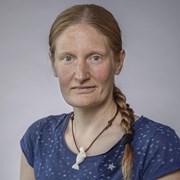New Methods in Machine Learning

These projects can be adapted to students from several departments such as Computer Science, Mathematical Sciences or Engineering Cybernetics. The student will need a supervisor associated with the university, but SINTEF can provide most of the practical supervision.
1. Expainable AI methods for time series modelling
Shapley-based methods used to explain predictions from black box models have become a popular application within explainable AI. This includes SHAP values and SAGE values. However, for time series modelling such as forecasting, the naturally strong correlation structure in the time series makes Shapley-based methods computationally demanding as well as being less efficient for explanation purposes. In this project, we want to investigate other techniques for XAI for time series modelling. This may include model-agnostic methods such as counterfactual explanations or model-specific methods such as using the information in the attention-layers of a DNN. The methods will be investigated on complex time series data where noisy and inaccurate measurements need to be accounted for.
Contact: Pål Johnsen
2. Port-Hamiltonian neural networks
This is a relatively new concept of semi-constrained machine learning, that has so far only been applied to toy models. We are stress-testing the framework for industrial application in safety critical systems, so we need to understand how it is affected by data quality such as noise or missing measurements, as well as how to scale up from toy models to complicated systems.
Contact: Sølve Eidnes / Alexander Stasik
3. Reservoir computing for industrial applications
Reservoir computing is a machine learning paradigm for dynamical systems which relies on recurrent models like RNNs, SNN or quantum computing systems. In contrast to classical ML, here the model is not trained, only it’s output weights, resulting in lower requirements for training data and noise resistance. While those systems have been studied in theory, the aim of this project is to apply it to model and control real-world systems.
Contact: Alexander Stasik
4. Optimal sampling of expensive measurements
Modelling and control of dynamical systems relies on input data. Often, taking measurements is expensive. The goal of this project is to study how to minimise observations while still controlling the system in a safe way.
Contact: Alexander Stasik
5. Misclassification detection and explanation in deep neural networks
In this project, the aim is to infer whether a prediction from a complex neural network is correct or not, hence being an indicator for the uncertainty of a particular prediction. This ability is essential in order to deploy an ML model in a trustworthy manner, for instance in a decision-making process. A procedure, first introduced at SINTEF, involves the investigation of the inner workings of the neural network by looking at the probability distribution of correctly and wrongly predictions in the different layers of the neural network. This information has been used to construct hypothesis tests to infer whether the prediction is correct or not. We want to investigate this method even further, and even explore whether this procedure not only detects wrong predictions, but also can explain the reason for the prediction being wrong.
Contact: Pål Johnsen
6. Data-Driven Residual Correction of a First-Principles Model
First-principle models are based on known physical, chemical, or mathematical theory, and deliver highly accurate predictions when the underlying theoretical assumptions are met. This is, however, rarely the case in the real world. Machine Learning and other data-driven methods can be used in support of a first-principle model to correctly adapt for the uncertainty contained in the real-world data. This project concerns the development of a data-driven correction module for a first-principle model of chemical reactions.
Contact: Pål Johnsen
7. Time series modelling for industrial processes
Since it’s breakthrough in the last decade, AI has been most prominent and promising on problems that are digital in nature, like image analysis, language models and targeted advertising. Industry applications can include physical, chemical and biological systems that bring along several complicating issues. Most industrial systems at present are often highly complex and of a nature that makes it difficult to get data of sufficient quality and quantity to use purely data-driven methods. Furthermore, one often must consider safety-critical systems, which puts extra requirement on the precision and trustworthiness of the models used. This project concerns the development and testing of techniques for dealing with industrial time series data, with the goal of making precise and reliable forecasting models.
Contact: Sølve Eidnes
8. A new approach to uncertainty propagating neural networks
The Kolmogorov-Arnold Networks (KANs) have been proposed as and alternative to Multi-Layer Perceptrons (MLPs). While MLPs have fixed activation functions for the neurons and learnable weights on the edges, KANs have learnable activation functions and no learnable weights. The original paper claims KANs to be faster and better scaling than MLPs. Using Gaussian Processes as the activation function allows to fast propagate uncertainties through the network. The project will explore this concept further an quantify performance and robustness towards usage in industrial settings. The student will primarily use simulated data, and potentially sensor data from one or more industrial partners via SFI NorwAI.
Contact: Alexander Stasik and Signe Riemer-Sørensen
Required skills: Familiarity with Bayesian statistics, Gaussian processes and neural networks, pytorch.
